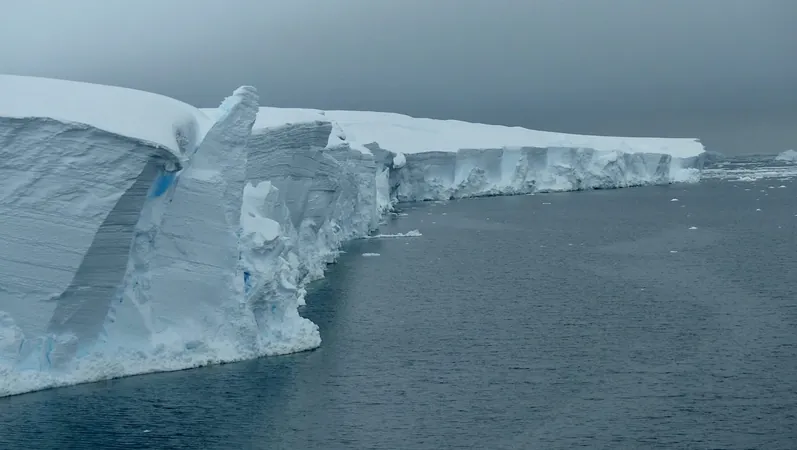
Antarctica's Thwaites Glacier Faces Dire Future: Could Sea Levels Rise by Up to 3.3 Meters?
2024-09-21
Overview
In a startling revelation, scientists from a collaborative UK-US team have determined that the Thwaites Glacier in West Antarctica shows alarming signs of accelerating retreat, raising concerns about a potential global sea-level rise. Meeting at the British Antarctic Survey (BAS) in Cambridge, researchers are delving into the complex and rapidly evolving dynamics of this colossal glacier, which has been the focus of intense study since the launch of the International Thwaites Glacier Collaboration (ITGC) in 2018.
The Size and Impact of Thwaites Glacier
Thwaites Glacier, noted for being one of the largest and fastest-changing glaciers in the world, spans an area comparable to the British Isles or the entire state of Florida. Over 2,000 meters thick in places, it has become a significant contributor to rising sea levels; the volume of ice spilling into the ocean has doubled since the 1990s. As the Amundsen Sea Embayment, the glacier’s region, contributes to 8% of the current global sea level rise—which averages 4.6 mm annually—its potential collapse could spell disaster for coastal communities worldwide.
Concerns Over Accelerating Retreat
Dr. Rob Larter of BAS stated that Thwaites has been in a state of retreat for over 80 years, with a worrying acceleration over the past three decades. Current research indicates that this trend is likely to continue, bringing dire implications for millions of people living in low-lying areas from Bangladesh to Pacific Island nations, and major urban centers like New York and London.
Future Projections and Predictions
The data indicate that the Thwaites Glacier could become increasingly unstable within the next century, possibly resulting in an unprecedented rate of retreat. There are concerns that recently identified processes influencing glacial behavior could trigger even sooner collapses, as they remain insufficiently integrated into large scale predictive models.
Research Efforts
Researchers are employing cutting-edge techniques—including underwater robotics and innovative ice flow modeling—to gain a clearer picture of Thwaites' shifting dynamics. Despite recent advancements, the full scope and implications of these changes remain largely unknown, heightening the urgency for continued research.
Vulnerability to Climate Change
Given the glacier's precarious position atop a seabed that slopes deeper into the continent, it is particularly susceptible to warming ocean waters. If the entire West Antarctic Ice Sheet were to collapse, sea levels could rise by an staggering 3.3 meters, placing coastal inhabitants at considerable risk.
Need for Climate Intervention
Dr. Ted Scambos, a glaciologist and science coordinator for the ITGC, expressed concern about the predictions from recent computer models, which estimate that ice loss will escalate through the 22nd century and could result in a broad collapse of the West Antarctic Ice Sheet by the 23rd century. He remarked, "Immediate, sustained climate intervention could mitigate some of these effects in the long term, especially regarding the influx of warm ocean water driving the retreat."
Global Implications
As the alarming realities of climate change unfold, the scientific community is under pressure to provide insights and solutions. The ITGC draws funding from the US National Science Foundation and the UK Natural Environment Research Council, underscoring the global nature of this vital research as we face an uncertain future.
Conclusion
The fate of the Thwaites Glacier is not just a local or national issue; it poses a global threat that could reshape coastlines and economies around the world. Can we avert a looming disaster, or will our planet's ice giants hold the key to humanity's survival in an ever-warming world?



 Brasil (PT)
Brasil (PT)
 Canada (EN)
Canada (EN)
 Chile (ES)
Chile (ES)
 España (ES)
España (ES)
 France (FR)
France (FR)
 Hong Kong (EN)
Hong Kong (EN)
 Italia (IT)
Italia (IT)
 日本 (JA)
日本 (JA)
 Magyarország (HU)
Magyarország (HU)
 Norge (NO)
Norge (NO)
 Polska (PL)
Polska (PL)
 Schweiz (DE)
Schweiz (DE)
 Singapore (EN)
Singapore (EN)
 Sverige (SV)
Sverige (SV)
 Suomi (FI)
Suomi (FI)
 Türkiye (TR)
Türkiye (TR)